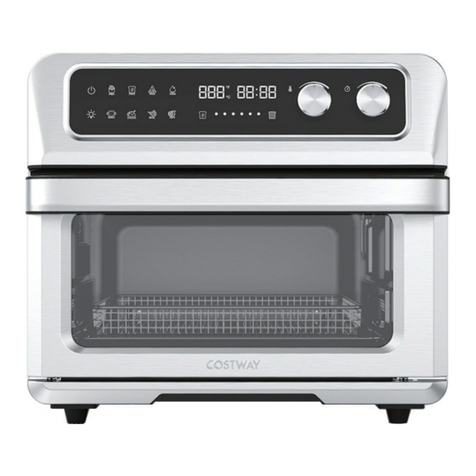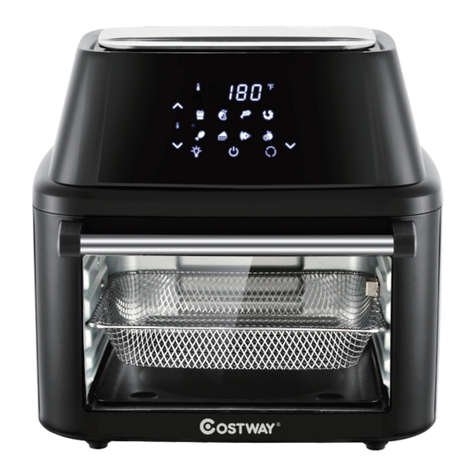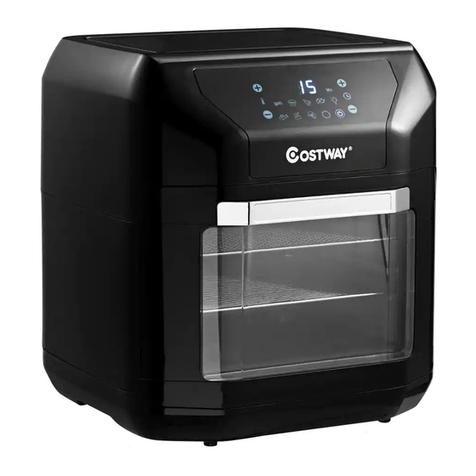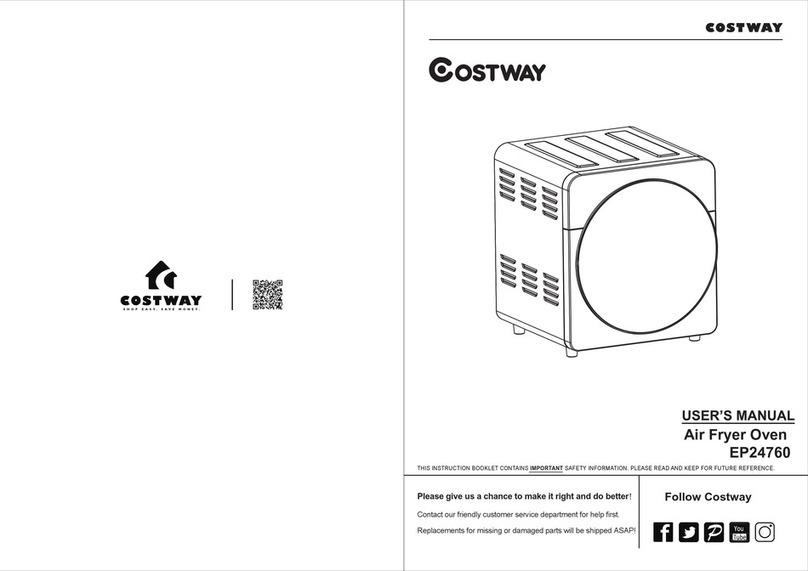
• DO NOT use aluminum foil or protective liners to line any part of
the appliance, especially the oven bottom. Installing these liners
may result in risk of electric shock or fire.
• If materials inside an oven should ignite, keep door closed. Turn
FIRE SAFETY
off the appliance and disconnect the circuit at the circuit breaker
box.
• Use this appliance only for its intended purpose as described in
this manual. For example, NEVER use the appliance for warming
or heating the room. NEVER use the appliance for storage.
• ALWAYS have a working smoke detector near the kitchen.
• In the event that personal clothing or hair catches fire, drop and
roll immediately to extinguish flames. Smother flames from food
fires other than grease fires with baking soda.
• Have an appropriate fire extinguisher available, nearby, highly
visible and easily accessible near the oven.
• Smother flames with a close-fitting lid, cookie sheet, or metal
tray, then turn off the burner. Exercise caution to prevent burns. If
the flames do not go out immediately, evacuate and call the fire
department.
• NEVER pick up a flaming pan. You may be burned.
• DO NOT use water on grease fires.
• Smother the fire or flame. Or use dry chemical or foam-type
extinguishers.
• Use an extinguisher ONLY if:
1) You know you have a Class ABC extinguisher, and you already
know how to operate it.
2) The fire is small and contained in the area where it started.
3) The fire department is being called.
4) You can fight the fire with your back to an exit.
IMPORTANT:
Save this manual for the local electrical inspectors use.
• Have the installer show you the location of the circuit breaker or
fuse. Mark it for easy reference.
• Be sure your appliance is properly installed and grounded by a
qualified service personnel. Connect only to a properly grounded
outlet.
• This appliance is intended for normal family household use only.
It is not approved for outdoor use. If you have any questions, ask
qualified technician for help.
• DO NOT store or use corrosive chemicals, vapors, flammables or
nonfood products in or near this appliance. It is specifically
designed for use when heating or cooking food. The use of
corrosive chemicals in heating or cleaning will damage the
appliance and could result in injury.
• DO NOT operate this appliance if it is not working properly, or if it
has been damaged. Contact an qualified service personnel.
• DO NOT obstruct oven vents.
• DO NOT repair or replace any part of the appliance, unless
specifically recommended in this manual. Refer all servicing of this
appliance to a qualified service personnel.
PROPER INSTALLATION AND MAINTENANCE
WARNING:
To reduce the risk of personal injury in the event of a grease
fire, observe the following.
04 05
































